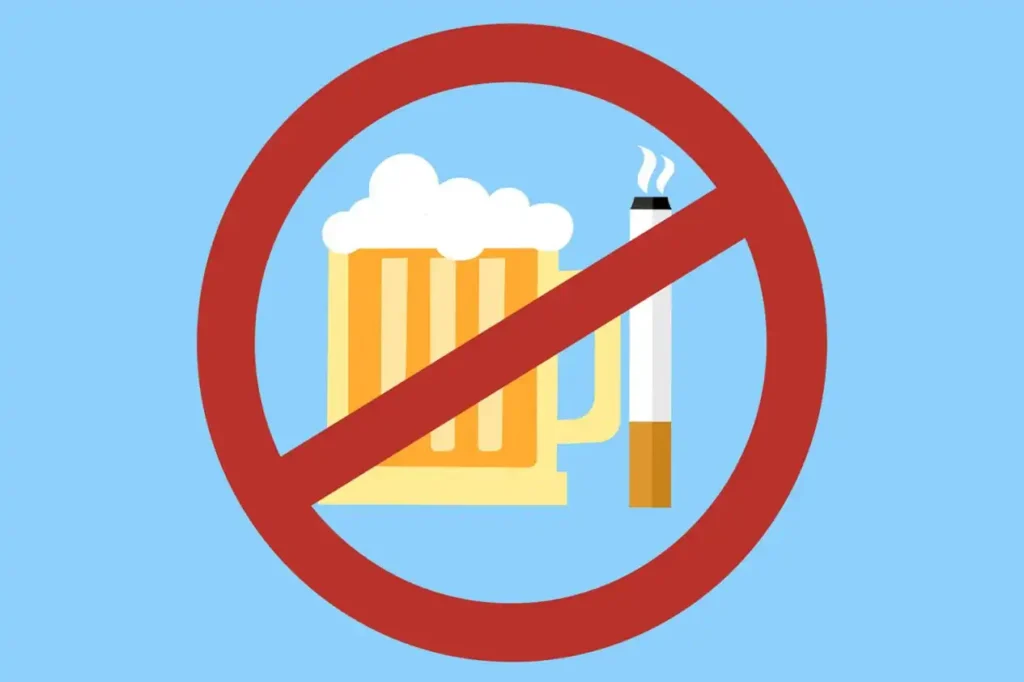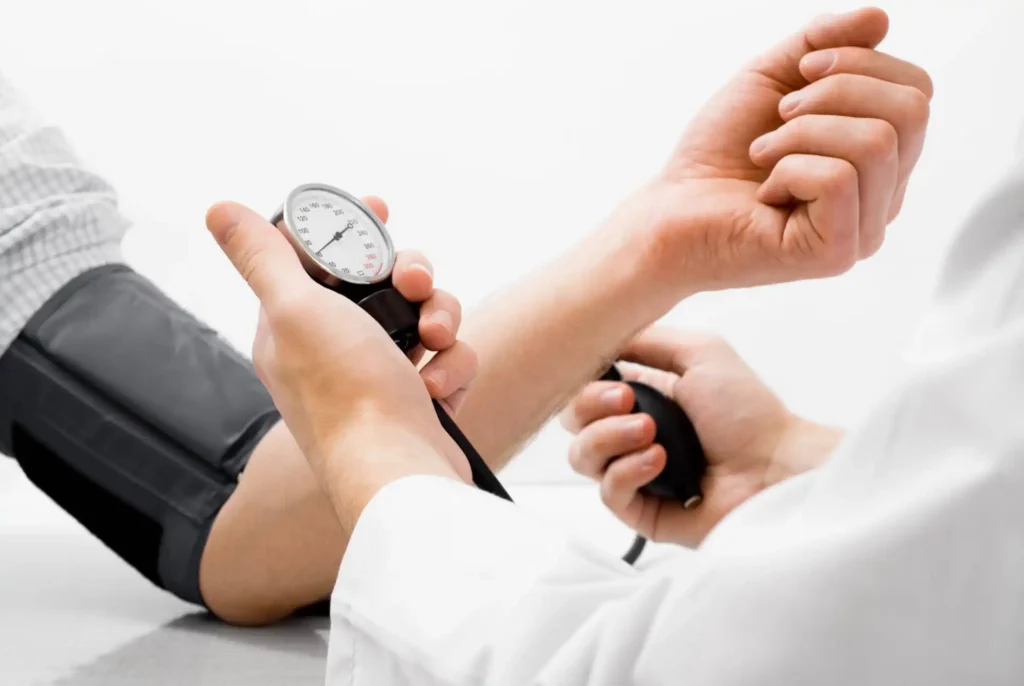If you have high blood pressure, you might wonder if you need medication to treat it. But lifestyle changes are crucial for managing high blood pressure. Controlling your blood pressure through a healthy lifestyle might help you avoid, delay, or reduce your need for medication.
Here are 10 lifestyle changes that can lower and keep blood pressure down.
1. Lose Extra Weight and Watch Your Waistline
Blood pressure often increases as weight increases. Being overweight also can cause disrupted breathing while you sleep (sleep apnea), which further raises blood pressure.
Weight loss is one of the best lifestyle changes for controlling blood pressure. Losing even a small amount of weight if you’re overweight or obese can help reduce your blood pressure. In general, blood pressure goes down by about 1 millimeter of mercury (mm Hg) with each kilogram (about 2.2 pounds) of weight lost.
Besides shedding pounds, you should also keep an eye on your waistline. Too much weight around your waist can put you at greater risk of high blood pressure.
In general:
- Men are at risk if their waist measurement is greater than 40 inches (102 centimeters).
- Women are at risk if their waist measurement is greater than 35 inches (89 centimeters).
These numbers vary among ethnicities. Ask your health care provider about a healthy waist measurement for you.

2. Get Regular Exercise
Regular aerobic exercise can lower high blood pressure by about 5 to 8 mm Hg. It’s important to be consistent, because if you stop exercising, your blood pressure can rise again. As a general goal, aim for at least 30 minutes of moderate physical activity every day.
Exercise also helps keep blood pressure that’s slightly high from progressing to high blood pressure (hypertension). For those who already have high blood pressure, regular physical activity can bring blood pressure down to safer levels.
Some examples of aerobic exercises that can help lower blood pressure include walking, jogging, cycling, swimming, and dancing. Another helpful type of exercise is high-intensity interval training. This type of training involves short bursts of intense activity alternated with brief periods of lighter activity.
Strength training also can help lower blood pressure. Aim to include strength training exercises at least two days a week. Talk to your health care provider about developing an exercise program.
3. Eat a Healthy Diet
Eating a diet rich in whole grains, fruits, vegetables, and low-fat dairy products and low in saturated fat and cholesterol can lower high blood pressure by up to 11 mm Hg. Examples of eating plans that can help control blood pressure include the Dietary Approaches to Stop Hypertension (DASH) diet and the Mediterranean diet.
Potassium in your diet can lessen the effect of salt (sodium) on blood pressure. Food manufacturers often add sodium to processed foods to preserve them or enhance flavor. Aim for a daily dietary intake of potassium between 3,500 and 5,000 milligrams (mg). This can lower blood pressure by 4 to 5 mm Hg. Talk to your health care provider about how much potassium is right for you.

4. Reduce Sodium in Your Diet
Even a small reduction in the sodium in your diet can improve your heart health and lower blood pressure. The effect of sodium intake on blood pressure varies among groups of people. In general, limit sodium to less than 2,300 mg a day. However, a lower sodium intake of 1,500 mg a day or less is ideal for most adults. This can lower high blood pressure by about 5 to 6 mm Hg.
To decrease sodium in your diet:
- Read food labels. Choose low-sodium foods and drinks.
- Eat less processed foods. Naturally low in sodium, most sodium is added during processing.
- Don’t add salt at the table. Use herbs or spices to add flavor to your food.
- Cook at home. Doing so allows you to control the sodium content of your food.
5. Limit Alcohol
Limiting alcohol to less than one drink a day for women and less than two drinks a day for men can help lower blood pressure by about 4 mm Hg. One drink is defined as 12 fluid ounces (360 milliliters) of beer, 5 fluid ounces (142 grams) of wine, or 1.5 fluid ounces (42.5 grams) of 80-proof liquor.
But drinking too much alcohol can actually raise blood pressure by several points. It can also reduce the effectiveness of blood pressure medications.

6. Quit Smoking
Smoking raises blood pressure. Quitting helps lower blood pressure and also reduces your risk of heart disease, improves your overall health, and may lead to a longer life.
7. Get a Good Night’s Sleep
Getting less than seven hours of sleep nightly over several weeks can lead to a higher risk of having high blood pressure. Many medical conditions, including sleep apnea, restless legs syndrome, and general sleeplessness (insomnia), can disrupt sleep.
Adults should aim to get 7 to 9 hours of sleep each night. If you regularly have trouble sleeping, talk to your health care provider. Finding and treating the cause may help improve your sleep. However, if you don’t have sleep apnea or restless legs syndrome, these simple tips may help you get more restful sleep.
- Stick to a schedule. Go to bed and wake up at the same time each day. Try to keep the same sleep schedule on weeknights and weekends.
- Create a restful environment. Make sure your bedroom is cool, quiet, and dark. Do something relaxing in the hour before bed. This might include taking a warm bath or doing relaxation exercises. Avoid bright lights, such as from a television, phone, or tablet screen, in the hour before bed.
- Watch what you eat and drink. Don’t go to bed too hungry or too full. Avoid large meals close to bedtime. Also limit or avoid nicotine, caffeine, and alcohol close to bedtime.
- Limit naps. For those who find naps helpful, limit them to 30 minutes and avoid taking them late in the day. You may sleep better at night.

8. Manage Stress
Long-term stress may contribute to high blood pressure. More research is needed to determine the effects of stress-reduction techniques on blood pressure.
However, it’s never a bad idea to identify what causes your stress, such as work, family, finances, or illness. Once you know what your stressors are, find healthy ways to manage your stress. Try:
- Simplifying your schedule. Look at your day and focus on your most important tasks. Learn to say no. Allow enough time to get things done.
- Focusing on problems you can control and making a plan to solve them. If you have an issue at work, talk to your manager. If you are having conflict with your child or partner, work on solving it.
- Avoiding stress triggers. For example, if rush-hour traffic causes you stress, travel earlier or take public transportation. Avoid people who cause you stress, if possible.
- Making time to relax. Set aside time each day to sit quietly and breathe deeply. Make time for enjoyable activities or hobbies, such as taking a walk, cooking, or volunteering.
- Practicing gratitude. Expressing thanks to others can help reduce stress.
9. Monitor Your Blood Pressure at Home and Get Regular Checkups
You can monitor your blood pressure at home to help ensure your medication and lifestyle changes are working.
Home blood pressure monitors are available widely and without a prescription. Talk to your health care provider before you start home monitoring.
Regular checkups with your health care provider are also key to controlling your blood pressure. If your blood pressure is well-controlled, ask your provider how often you need to check it. You may need to check it daily or less often.

10. Manage Your Cholesterol and Blood Sugar
High blood sugar and high levels of “bad” cholesterol (non-HDL cholesterol) can increase your risk of heart disease. For help managing your cholesterol and blood sugar, try some of the same healthy lifestyle changes that help manage your blood pressure. These include eating a healthy diet, exercising, losing extra weight, and not smoking. Follow the recommendations your health care provider gives you on how to manage your cholesterol and blood sugar.
Making these 10 lifestyle changes is a long-term commitment. Sometimes, it can feel overwhelming. So, reach out to your family and friends for support when you need it. Your family can encourage you to take care of yourself, drive you to your health care appointments, or embark on an exercise program with you to keep your blood pressure lower.
If you find you need support beyond your family and friends, consider joining a support group. This can put you in touch with people who can provide encouragement and boost your confidence. Support groups also can offer practical tips for dealing with your condition.
